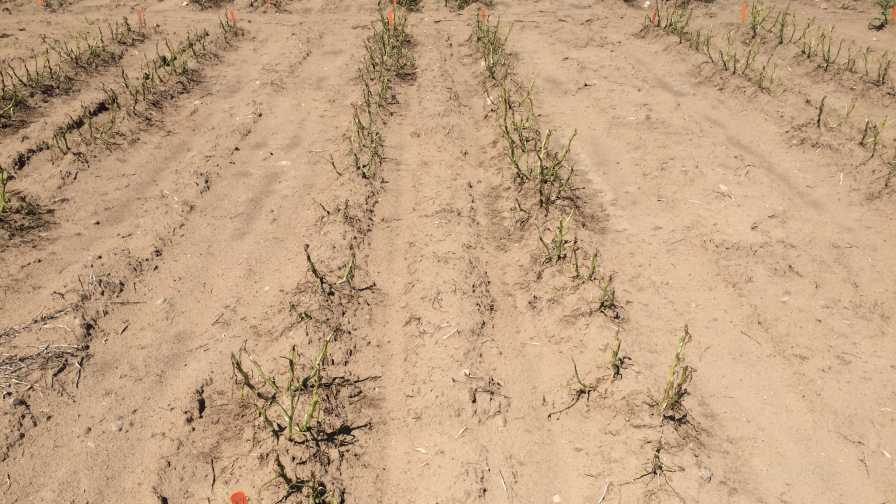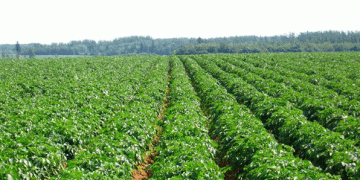Colorado potato beetle (CPB) populations have an amazing ability to develop resistance to insecticides — including many of the carbamate, organophosphate, pyrethroid, spinosyn, and neonicotinoid insecticides that are used today.

CPB’s capacity to develop resistance is not surprising when you consider this pest had to adopt ways to tolerate high concentrations of toxic glycoalkaloids in their solanaceous hosts. In essence, these beetles are pre-equipped to deal with toxins. It may take only small changes to confer resistance to new toxins.
Moreover, CPBs produce huge numbers of offspring, greatly increasing the odds insecticide-resistant mutants will occur randomly. Consider that 50 eggs per plant, multiplied by 20,000 potato plants per acre, can produce a million beetles in just one generation. And there are often two or three generations in a season. When an insecticide is first applied to a crop, a small number of targeted pests (perhaps just one in 10 million) may survive because of a random mutation. If nothing else kills them, the few resistant mutants will reproduce. And many of their offspring will inherit the insecticide resistance trait.
Tips to Control CPBs and Avoid Insecticide Resistance
Potato Crop Rotation and Separation
CPBs overwinter as adults in the soil in the previous year’s potato fields then emerge in the spring to feed, mate, and lay eggs. Larvae emerge from eggs, feed for a while, and then drop to the ground to pupate and start the cycle over again as many as three times in a season. Placing this year’s potatoes far from last year’s makes it harder for potato beetles to find something to eat when they emerge. They feed only on solanaceous crops and weeds, and they do not travel long distances. For this strategy to effectively reduce CPB pressure, separate the field by at least 0.25 miles.
Spray Considerations
Some insecticides degrade if the spray solution is too acidic (e.g., spinosad, spinetoram). Others degrade if the solution is alkaline-neutral (e.g., phosmet). And you shouldn’t use some insecticides with sticker/binder type adjuvants (e.g., abamectin and thiamethoxam). These products will not work well if you don’t pay attention to these details, which are usually included in the product label.
Application Timing and Rate
It is tempting to make foliar insecticide applications as soon as you see adult beetles. But you usually gain better efficacy if you wait for the larvae to emerge. Most insecticides work best against newly hatched, small larvae. We usually recommend making foliar applications when about 50% of the larvae have hatched. Monitor CPB populations closely to get the timing right. Use the full label rate (dosage) of the insecticide for the best results.
Rotate Insecticides with Different Modes of Action
Relying on a single insecticide (or multiple ones that kill with similar modes of action) can quickly result in resistance or cross-resistance in CPB populations. The Insecticide Resistance Action Committee (IRAC) organizes insecticides according to their mode of action. So you need to rotate insecticides from different IRAC groups with each application. If you don’t kill resistant mutants with one, you can probably control them with a subsequent application of a completely different insecticide.
Neonicotinoid Insecticides
Many potato growers report excellent control of CBPs when they apply a neonicotinoid (IRAC Group 4) at planting or hilling. It’s been known to provide 80 to 100 days of residual control. But exposure to insecticides with long persistence in the foliage can create strong selection pressure towards resistance. There are many neonicotinoid-resistant CPB populations in the East and Midwest. To minimize risk in the West, we ask growers if they used an at-plant or at-hilling neonicotinoid, to not apply any foliar neonicotinoids in-season.

Volunteer Potatoes and CPBs
Volunteer potatoes are an early food source and breeding ground for CPB adults that emerge in last year’s potato fields. They tend to linger on these plants, but some of their offspring may eventually find their way into this year’s potatoes. If volunteers are common in your region, be on the lookout for these late arrivals. Insecticides applied to control CPBs that showed up earlier (with an at-plant neonicotinoid) will have probably expired.
Extended Diapause
Some CPB populations avoid exposure to insecticides by staying underground longer and delaying their development. This resistance strategy is called extended diapause.This is another reason to monitor CPB populations in potato fields closely. You can make applications when the pests are present rather than spraying on a calendar basis.
Carrie Huffman Wohleb is Associate Professor/Regional Specialist – Potato, Vegetable, and Seed Crops, at Washington State University. See all author stories here.







